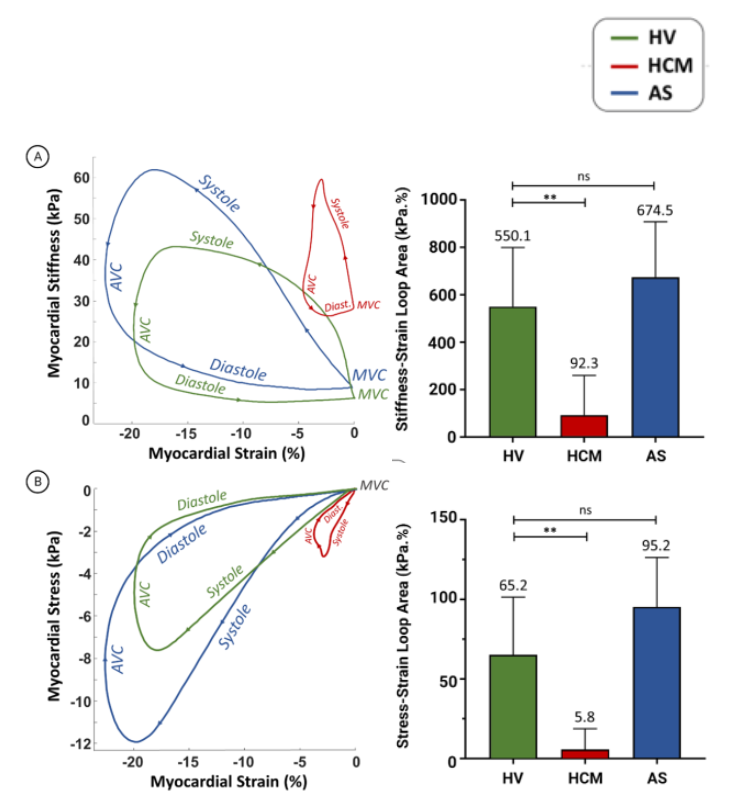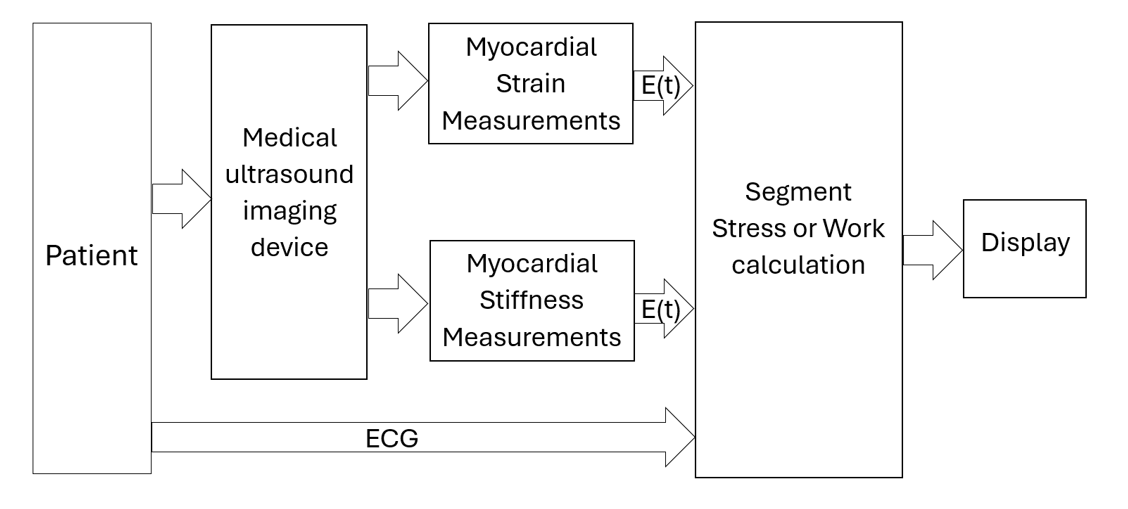Tech #1455: Digital biomarker to revolutionize heart function assessment
Cardiac dysfunction, a leading cause of death worldwide, is exacerbated by conditions like hypertrophic cardiomyopathy (HCM), which lacks reliable biomarkers for understanding myocardial work and its relation to adverse events. SickKids researchers have developed a non-invasive digital biomarker using ultrasound to calculate myocardial stress and work, offering a fast, accurate method to evaluate myocardial function and improve diagnosis and management of cardiac diseases like HCM.
IP&C is seeking licensees for this invention
Technology Reference Number
#1455
Inventors
IP&C Contact
Patents
Provisional Patent filed on March 26th, 2025 PCR/CA2025/050425
Category
Diagnostics
Keywords
Cardiac dysfunction, HCM, digital biomarker, myocardial work, strain, stiffness
Background
Cardiac dysfunction is the leading cause of death worldwide. Many cardiac diseases such as heart failure and hypertrophic cardiomyopathy (HCM) would be better diagnosed, understood and managed with a reliable biomarker for myocardial work.
HCM is the most common inherited cardiac disease and leading cause of sudden cardiac death in children and young adults. Myocardial work gets progressively worse likely due to structural tissue disruptions. However, the association between genotype variation, phenotype expression, and adverse events in pediatric HCM is not fully understood. Quantitative myocardial parameters, such as myocardial stiffness or work, are required to further understand the cause of these adverse events. Ultrafast ultrasound imaging (UUI) has been recently used to quantify myocardial stiffness using shear waves elastography (SWE). Combined with strain, myocardial work can be computed.
Existing non-invasive methods for evaluating segmental myocardial work rely on debatable assumptions about left ventricular pressure and geometry. These acknowledged limitations have been accepted due to the absence of superior alternatives for estimating myocardial stress.
Invention Description
SickKids researchers have invented a digital biomarker for determining stress or work as a function of time for individual myocardial segments, based on strain and stiffness measurements (Fig.1).
The invention is advantageous as it provides this determination solely from ultrasound measurements, by echocardiography. This allows a fast, easy and non-invasive determination with high temporal and spatial resolution. A number of indices for segment stress or work can be calculated, which can be used as markers for the individual segment function.
Commercial Applications
- Using our invention, the operator would only need one device (ultrasound device) to assess myocardial work.
- Can be integrated into existing ultrasound, wearable and imaging software solutions.
- Our invention can lead the medical market for assessment of myocardial work as it uses stiffness (the ideal biomarker) combined with strain, to calculate stress (using Hooke’s law).

Figure 2.
(A) Stiffness-strain loop area is decreased in HCM group compared with HV while there is no statistical difference between HV and AS. (B) Stress-strain loop area is decreased in HCM group compared with HV while there is no statistical difference between HV and AS. (*): p<0.05; (**): p<0.01; (ns): non-significant difference; AS: aortic stenosis; AVC: aortic valve closure; HCM: hypertrophic cardiomyopathy; HV: healthy volunteers; MVC: mitral valve closure. On histograms, values are presented as mean and standard deviation.
Developmental Stage
We have demonstrated the technical feasibility of calculating our biomarker (one-beat segmental myocardial work) based on measurements of myocardial stiffness, strain and thickness, throughout the cardiac cycle in humans. This method holds potential for clinical applications in diagnosing cardiac dysfunction and therapeutic monitoring.
Our digital biomarker has also demonstrated the ability to identify an abnormal phenotype for patients with HCM genetic mutation with a negative phenotypic profile previously detected using other methods. Using our digital biomarker, the definition of normal phenotype in this population could be optimized and better individualized.
Development plan:
- Clinical studies comparing our biomarker and reference technique (invasive hemodynamic) to assess chamber work.
- Prospective studies demonstrating the connection between myocardial work results and clinical outcomes.
- Therapeutic clinical trials using our biomarkers reference technique to assess the drug impact.


